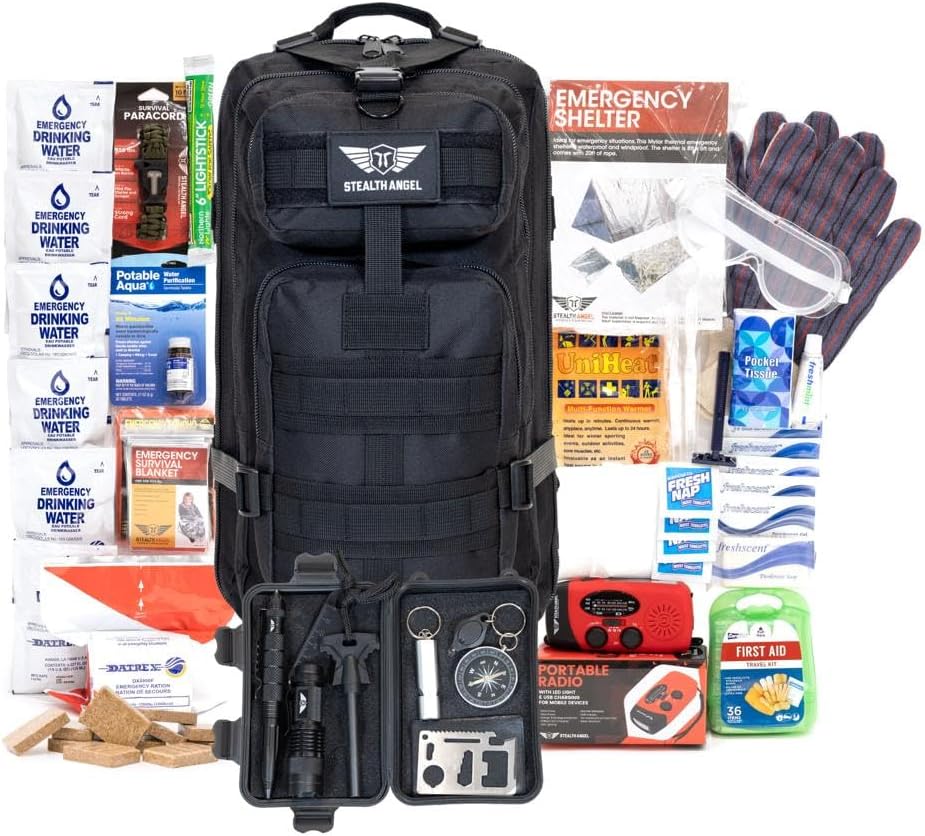
Disasters can strike at any moment, and whether it’s a natural calamity, power outage, or societal unrest, being prepared can mean the difference between survival and catastrophe. Many people assume that emergency situations will never happen to them, but history has repeatedly proven otherwise. From hurricanes and earthquakes to economic collapses and even home invasions, taking proactive steps now can safeguard your family’s future.
Essential Supplies: Food, Water, and Electricity
Stockpiling Food
One of the most critical aspects of emergency preparedness is ensuring you have enough food. Grocery stores can be emptied in hours during a crisis, leaving those unprepared vulnerable. Here are key points for food storage:
Non-Perishable Foods – Stockpile canned goods, freeze-dried meals, rice, pasta, and beans.
Long-Term Storage – Consider investing in survival food kits with a 25-year shelf life.
Self-Sufficiency – Growing your own food through gardening or hydroponics ensures sustainability.
Cooking Without Power – A propane stove, wood stove, or solar oven will allow you to cook when electricity is out.
Securing a Clean Water Supply
Water is even more critical than food for survival. Without it, dehydration can set in within three days. Here’s how to prepare:
Store Enough Water – A general rule is one gallon per person per day for drinking and sanitation.
Water Filtration and Purification – Have water filters, purification tablets, and the ability to boil water if needed.
Rainwater Collection – A rainwater barrel system can provide a renewable water source.
Backup Power and Electricity
A power outage can quickly turn into a crisis. Having alternative energy sources is crucial for staying warm, keeping food fresh, and maintaining communication.
Generators – Gas, diesel, or solar-powered generators provide backup electricity.
Battery Banks – Portable power stations can keep phones and small devices running.
Solar Power – Solar panels with battery storage ensure long-term resilience.
Alternative Heating Sources – Wood-burning stoves and propane heaters can keep your home warm in the winter.
Home Defense: Protecting Your Family
A critical aspect of emergency preparedness is being able to defend your home and family from threats. Unfortunately, during disasters, looting and crime often rise as desperation sets in.
The Importance of Firearms
While some may hesitate to consider firearms as part of their preparedness plan, the reality is that law enforcement can be overwhelmed in a crisis. Owning a firearm and knowing how to use it responsibly can provide an essential layer of protection.
Self-Defense – In a breakdown of order, having a firearm ensures you can defend your loved ones.
Deterrence – Criminals are less likely to target a well-armed household.
Training and Responsibility – Regular training, safe storage, and proper usage are necessary to ensure responsible firearm ownership.
Ammunition Supply – Stockpile enough ammunition to ensure long-term viability in a prolonged emergency.
Other Home Security Measures
In addition to firearms, reinforcing your home can deter potential threats.
Reinforced Doors and Windows – Strengthen entry points with deadbolts and shatterproof glass.
Security Cameras and Alarms – Early detection can give you the time to react appropriately.
Outdoor Lighting – Motion-sensor lights can deter intruders.
Community Watch – Build a network with neighbors for mutual security and assistance.
Types of Disasters You Need to Prepare For
Understanding the various disasters that could occur allows you to create a comprehensive preparedness plan.
Natural Disasters
Hurricanes & Tornadoes – High winds, flooding, and structural damage make these deadly. Have an evacuation plan and a reinforced shelter.
Earthquakes – Secure heavy furniture, have an emergency kit, and know safe zones in your home.
Wildfires – Create defensible space around your home and have an evacuation plan.
Blizzards & Extreme Cold – Ensure you have alternative heating methods and enough supplies to last through prolonged snowfall.
Societal Disruptions
Economic Collapse – Job loss, hyperinflation, or supply chain disruptions can leave people unable to buy essentials.
Grid Failures – Cyberattacks or system failures can cause widespread blackouts lasting weeks or longer.
Pandemics – Future health crises could require quarantine measures and self-sufficiency.
Personal and Home Emergencies
Job Loss – Financial preparedness and food storage can provide stability during economic hardship.
Medical Emergencies – Stockpile medications, first aid supplies, and learn basic medical procedures.
Home Invasions – Security measures and self-defense training can make all the difference.
Take Action Now: Begin Your Emergency Preparedness Plan
Emergency preparedness is not paranoia—it’s a responsible approach to protecting your family. Every day, unforeseen events impact lives, and those who have prepared in advance fare significantly better.
Steps to Take Today:
Assess Your Needs – Identify the risks specific to your location.
Start Stockpiling Essentials – Begin building a supply of food, water, and medical supplies.
Secure Your Home – Implement security measures to protect against threats.
Train and Educate Your Family – Ensure everyone knows emergency procedures and basic survival skills.
Stay Informed – Keep up with news and potential threats that could affect your area.
Disaster can strike at any moment, but with proper planning and preparation, you can ensure your family remains safe and secure. Start today—because when the time comes, it will be too late to prepare.

